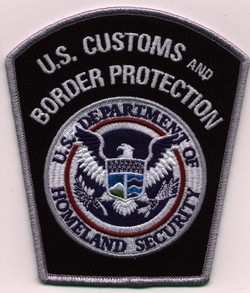Mon, Nov 17, 2008
New Rules Mirror Commercial Requirements
 Over the
objections of the EAA and other aviation
"letter groups," the US Customs and Border Protection agency
recently enacted new rules changing the procedure for private
aircraft to provide advance notice of their intended arrival or
departure, and submit manifests of the persons on board. Private
aircraft are defined as any aircraft, other than government or
military, which are not engaged in carrying passengers or cargo for
compensation.
Over the
objections of the EAA and other aviation
"letter groups," the US Customs and Border Protection agency
recently enacted new rules changing the procedure for private
aircraft to provide advance notice of their intended arrival or
departure, and submit manifests of the persons on board. Private
aircraft are defined as any aircraft, other than government or
military, which are not engaged in carrying passengers or cargo for
compensation.
The new process is similar to the one currently in use by
commercial aircraft and will standardize advance notice procedures
for all CBP airports of entry. Under the new rule, pilots (or their
designee) will be required to submit advance notice and
passenger/crew manifest information to CBP via an approved
electronic data interchange system, no later than 60 minutes prior
to departure.
Previously, pilots were required to provide at least 60-minutes
advance notice of their arrival either directly to CBP at the place
of intended arrival, or by requesting in the remarks section of
their flight plan that Federal Aviation Administration Flight
Services advise CBP ("ADCUS"). Some but not all CBP locations also
request that pilots fax CBP detailed information about the
passengers, crew and aircraft in advance.
CBP says the electronic submission will include "essentially"
the same data elements previously provided through other means. CBP
will require that the pilot compare the manifest data to the
information on a Department of Homeland Security approved travel
document presented by each individual seeking travel onboard the
aircraft.
Such a departure clearance has been required for commercial
aircraft for some time, and the new rule will make such reporting
consistent for all general aviation aircraft through the same web
portal.
"CBP is working to strengthen general aviation security by
further minimizing the vulnerability of general aviation flights
being used to deliver illicit materials, transport dangerous
individuals, or employ the aircraft as a weapon," reads an agency
release. "Compared to regularly scheduled commercial airline
operations, there is only a limited pre-screening of private
arriving aircraft, passengers, and crew prior to departure. There
is also little to no screening of departing private aircraft,
passengers and crew prior to departure from the United States."
More News
“While legendary World War II aircraft such as the Corsair and P-51 Mustang still were widely flown at the start of the Korean War in 1950, a new age of jets rapidly came to >[...]
Decision Altitude (DA) A specified altitude (mean sea level (MSL)) on an instrument approach procedure (ILS, GLS, vertically guided RNAV) at which the pilot must decide whether to >[...]
Aero Linx: National Aviation Safety Foundation (NASF) The National Aviation Safety Foundation is a support group whose objective is to enhance aviation safety through educational p>[...]
Also: Cal Poly Aviation Club, $$un Country, Arkansas Aviation Academy, Teamsters Local 2118 In response to two recent general aviation accidents that made national headlines, more >[...]
“The FAA is tasked with ensuring our skies are safe, and they do a great job at it, but there is something about the system that is holding up the medical process. Obviously,>[...]
 Aero-News: Quote of the Day (04.28.25)
Aero-News: Quote of the Day (04.28.25) ANN's Daily Aero-Term (04.28.25): Decision Altitude (DA)
ANN's Daily Aero-Term (04.28.25): Decision Altitude (DA) ANN's Daily Aero-Linx (04.28.25)
ANN's Daily Aero-Linx (04.28.25) Airborne-Flight Training 04.24.25: GA Refocused, Seminole/Epic, WestJet v TFWP
Airborne-Flight Training 04.24.25: GA Refocused, Seminole/Epic, WestJet v TFWP Aero-News: Quote of the Day (04.29.25)
Aero-News: Quote of the Day (04.29.25)



